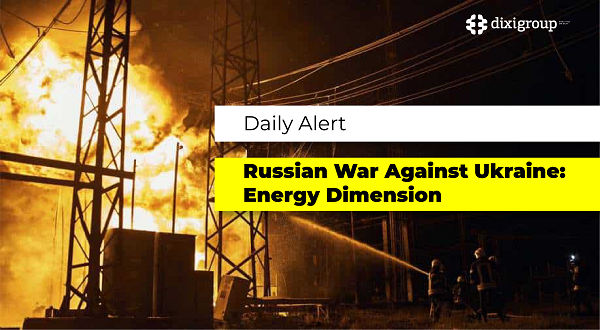Under Pressure: Investigating the “Great Blackout” in Spain
What vulnerabilities in the power system did this large-scale accident reveal?

Spain, which suffered a “great blackout” in late April, has presented the official results of the investigation into the causes of this high-profile incident, which cost the country’s economy over 400 million euros.
“Ukrainian Energy” has examined the conclusions published by the government commission and found out what changes representatives of the renewable generation industry expect to make in order to increase the reliability and security of energy supply.
Systemic deficiencies
The Spanish government reported that the causes of the “great blackout” in the country were not related to cyberattacks, as officials had initially assumed, but to poorly synchronized interaction between the power grid operator Red Electrica and the owners of generation when balancing the energy system.
Experts have identified a number of main interrelated factors that led to the accident. In particular, voltage surges caused a cascade shutdown of generation facilities. Under such conditions, traditional power plants usually act as voltage stabilizers: gas, nuclear and hydro, but on the day of the blackout on April 28, the system did not have enough capacity to control the voltage. Therefore, each outage led to its increase, which automatically turned off the following power plants to prevent ignition. The situation was worsened by frequency fluctuations, which specialists from the Red Electrica company tried to stabilize by turning off electricity imports from France. But this solution was not effective, which ultimately led to cascading blackouts.
“The responsibility for the blackout lies with the operator of the Red Electrica system and the owners of the generation. The operator did not program enough power plants to control the voltage, and some plants were disconnected illegally,” the government report says.
Professional disputes
In response, Red Electrica said that it could have prevented the blackout, but that traditional power plants, which play a role of reserve, did not fulfill their obligations in terms of generation volumes. “If voltage control services had been properly provided, the grid would have remained synchronized despite the cascading outages of power plants, and consumers would have had electricity,” said Concha Sánchez, director of general operations at Red Electrica.
She said that while the system was being restored after the first unexpected outages, the operator had recorded an abnormal increase in load on the grid. “One of the unexplained outages concerned a problem with a transformer on the power output line at a solar plant in southern Spain. As a result, approximately 355 MW of generation was lost. After that, more than 700 MW of renewable generation in the same region of the country were also disconnected. Generation losses continued to increase until they exceeded 2 GW, after which the system could no longer maintain the voltage level,” explained the Red Electrica representative.
But her explanation did not absolve the operator of responsibility. Spain’s Energy Minister Sara Aagesen also cited poor voltage control as one of the drivers of the blackout. She cited poor forecasting of supply and demand by Red Electrica and the poor performance of power plants built in the country as the main factors that caused the overvoltage problem.
For its part, Spanish industry body Aelec, which lobbies for energy companies, blamed Red Electrica’s poor planning of voltage control resources for the massive outages.
“The real cause of the blackout was not the operation of the power plants, but the clear lack of generating units that the system operator had to call on to meet the system’s needs for voltage control and stability,” Aelec said in a statement. “If the necessary synchronous resources had been allocated to cover the generation and voltage control failures, as is the case in a well-managed system, the collapse could have been avoided,” the organization explained.
According to Montel, synchronous generators, which are equipped with nuclear, gas and coal-fired power plants, supply electricity with a stable frequency and speed, and also provide grid inertia. They are currently the only technologies authorized for voltage control in Spain.
Aelec said that its member plants were operating properly on the day of the blackout, while Red Eléctrica had only scheduled one gas-fired plant in Andalusia to support the grid. “This plant represented only 3% of the total generation in the area where the blackout began, and its voltage control capacity was clearly insufficient,” the industry organization, which includes the three largest energy companies in the Iberian Peninsula, stressed: Endesa, Iberdrola and EDP.
Green generation not to blame
A report by the Spanish government on the blackout in the Iberian Peninsula has removed any doubt about the guilt of renewable energy sources (RES) in the blackout. This is the opinion of numerous specialized organizations, which have called for the acceleration of investments in the electricity grid to maintain its stable operation
“The report clearly shows that the reason for the outage was that nine conventional power plants failed to meet their targets,” said Juliette Phillips, coordinator of the German organization Beyond Fossil Fuels. She called on the Spanish government and Red Eléctrica to work on creating a sustainable energy system in the long term.
“The blackout in the Iberian Peninsula is not a failure of renewable energy, but a wake-up call that it is time to accelerate the modernization of the grid,” said Rana Adib, executive director of the French think tank REN21.
“We have been saying this for years - we need to invest in the grid to scale up affordable solar energy,” said Sonia Dunlop, CEO of the US-based Global Solar Council. According to her, the outdated grids, focused on traditional generation, need to be modernized by introducing new voltage control systems, inverters and energy storage systems. “Spain is significantly lagging behind in all these areas,” the expert added.
“The results of the investigation into the causes of the blackout should accelerate the energy transition, the adaptation of the grids, the development of energy storage technologies,” predicts Ismael Morales, head of climate policy at the Renewable Energy Foundation (Madrid).
The Spanish industry organization Unión Española Fotovoltaica (UNEF), which represents the interests of solar power plant (SPP) owners, believes that this technology can help control voltage in the power grid, but current legislation does not allow this.
“Currently, only traditional synchronous power plants — such as nuclear or gas — are allowed to regulate voltage in the grid. "We need to accelerate the update of the regulatory framework to allow the participation of renewables in voltage control mechanisms," the organization said in a statement. UNEF also stressed the need for the rapid implementation of key technologies: grid-forming inverters and battery storage.
Focus on network vulnerability
The European Transmission System Operators Association (ENTSO-E) is still investigating the causes of the Spanish blackout and network security measures as part of its investigation. Therefore, it believes that it is "too early" to determine the exact cause of the massive power outage or to assign responsibility."
"While much attention has been focused on the share of renewables in Spain's energy mix at the time of the accident, there is currently insufficient data to determine whether this was indeed a factor, and if so, to what extent," the ENTSO-E said in a statement. Many analysts have previously noted that the Iberian blackout has shown the vulnerability of networks that have limited interconnectors with neighboring countries.
At the same time, the International Energy Agency (IEA) notes that the Spanish incident “highlighted the global need for investment in networks to ensure sustainable and flexible energy supply” and also showed the need to review “critical pillars” of energy security, in particular, requirements for reserve capacity and balancing mechanisms.
According to the IEA, global annual spending on modernizing and expanding power transmission lines should reach $700 billion in order to meet national energy plans for the introduction of renewable energy by 2030. In 2024, such investments amounted to about $400 billion, the agency added.
Increased caution
After the blackout, there was talk in Spain of introducing stricter conditions for renewable energy permits to ensure the stability of the grid until it is modernized. This has raised concerns that the introduction of “green” generation will be slowed down.
But, as energy lawyer Pete Holthrop assures, there is no legal or technical reason to assume that additional administrative barriers will be introduced for developers. “Although there may be new technical requirements, for example, regarding the installation of batteries or the provision of grid support services,” he added.
Wood Mackenzie analyst Daniel Garasa believes that the cancellation of new renewable energy projects will be more related to low prices in the Spanish electricity market than to the consequences of the blackout. However, he admitted that after April 28, “there is a general feeling of distrust in RES” in the industry community, and network operation has switched to a mode of increased caution, with a greater participation of gas-fired power plants.
“This is not very positive news for the RES sector. But the government may decide to accelerate the deployment of energy storage systems. This will help solar power developers improve their business model and develop without prejudice,” Daniel Garasa concluded.
Svitlana Dolinchuk, specially for Ukrainian Energy








